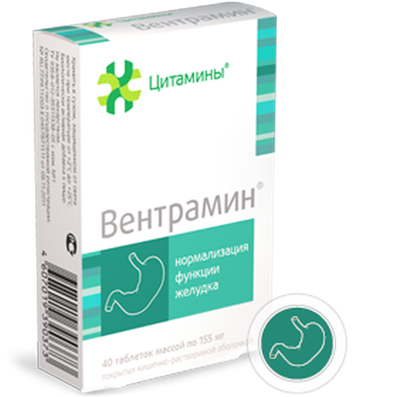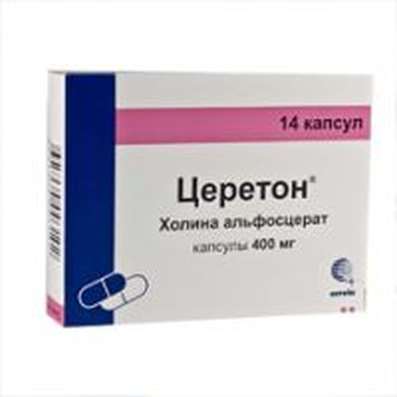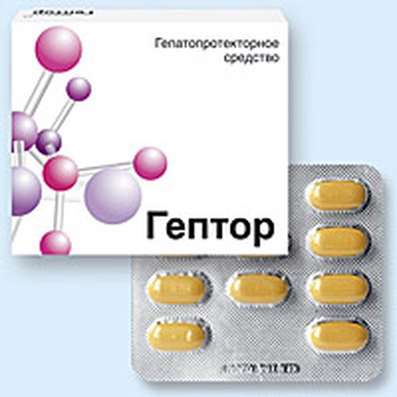Instruction for use: Glutamyl-Cysteinyl-Glycine disodium
I want this, give me price
Trade name of the drug – Glutoxim
The Latin name of the substance Glutamyl-Cysteinyl-Glycine disodium
Glutamyl-Cysteinyl-Glycinum dinatrium (genus. Glutamyl-Cysteinyl-Glycini dinatrii)
Pharmacological groups:
Other immunomodulators
The nosological classification (ICD-10)
A15-A19 Tuberculosis: Lightning pulmonary tuberculosis; Chronic tuberculosis of the lungs; Disseminated tuberculosis; Disseminated tuberculosis of the lungs; Pulmonary tuberculosis; Drug-resistant tuberculosis; Drug-resistant form of tuberculosis; Drug-resistant tuberculosis; Tuberculosis; Pulmonary tuberculosis; Pulmonary tuberculosis; Fulminant tuberculosis of the lungs; Tuberculosis of the lung chronic multidrug-resistant; Caseous pneumonia
A41.9 Septicemia, unspecified: Septic diseases; Septicemia / bacteremia; Toxico-infectious shock; Endotoxin shock; Bacterial septicemia; Bacterial infections of severe course; Generalized infections; Generalized systemic infections; Infections generalized; Wound sepsis; Septiccopymia; Septic-toxic complications; Septicemia; Septic conditions; Septic shock; Septic condition; Septic shock
B16 Acute hepatitis B: Viral hepatitis B; Hepatitis B; Acute hepatitis; Vaccination against hepatitis B; Subacute hepatitis; Acute viral hepatitis B; Acute lingering hepatitis B
B17.1 Acute hepatitis C: Viral active hepatitis C; Viral hepatitis C; Hepatitis C
B18 Chronic viral hepatitis
D84.9 Unspecified Immunodeficiency: Pneumonia in immunodeficient states; Autoimmune disease; Autoimmune diseases; Severe immunodeficiency; immune deficiency; Immunodeficiency; immunodeficiency diseases; Immunodeficiency states due to surgery; Immunotherapy for cancer; Immunomodulation; Infections in patients with weakened immune systems; Correction of immune deficiency; Correction of immunodeficiencies; Correction of a weakened immune system; Correction of a weakened immunity in immunodeficient states; Violation of immunity; Violation of the immune status; Immune System Disorders; Primary immunodeficiency; Maintaining immunity; Lowering the body's defenses; Lowering the immunity; Lowering the immunity of colds and infectious diseases; The decrease of the immune status; Lowered resistance to infections; Lowered resistance to infections and colds; Lowered resistance; Immunosuppression; Predisposition to colds; acquired immune deficiencies; Radiation immunodeficiency; The development of immunodeficiency; Immune dysfunction syndrome; immunodeficiency syndrome; primary immunodeficiency syndrome; Reducing the body's defenses; Immunosuppression; Reduced immune defense; Reducing local immunity; Reducing the total body resistance; The decrease in cell-mediated immunity; Reduced resistance to infections in children; Reducing the body's resistance; Reduced resistance; reduced immunity; Status immunodeficiency; Stimulation of the processes of nonspecific immunity; Heavy selective secondary immunodeficiency; immunity Oppression; Primary immunodeficiency
J06 Acute upper respiratory tract infections of multiple and unspecified locations: Frequent colds of viral diseases; Infections of ENT organs; Acute respiratory illness of influenza nature; Pain for colds; Acute catarrhal disease; Cold; Colds; Colds; Respiratory infection; Seasonal catarrhal disease; Seasonal colds; Pain in infectious and inflammatory diseases of the upper respiratory tract; Bacterial infections of the upper respiratory tract; Bacterial infections of the respiratory system; Viral respiratory disease; Viral respiratory tract infections; Inflammatory disease of the upper respiratory tract; Inflammatory diseases of the upper respiratory tract; Inflammatory diseases of the upper respiratory tract with difficult to separate sputum; Inflammatory respiratory disease; Secondary infections for colds; Difficult sputum separation in acute and chronic respiratory diseases; Upper respiratory tract infections; Infections of the upper respiratory tract; Respiratory tract infections; Respiratory and lung infections; Infectious-inflammatory diseases of the upper respiratory tract; Infectious-inflammatory diseases of the upper respiratory tract and ENT organs; Infectious-inflammatory diseases of the upper respiratory tract in adults and children; Infectious-inflammatory diseases of the upper respiratory tract; Infectious inflammation of the respiratory tract; Respiratory tract infection; Qatar upper respiratory tract; Catarrh of the upper respiratory tract; Catarrh of the upper respiratory tract; Catarrhal phenomena from the upper respiratory tract; Cough in diseases of the upper respiratory tract; Cough for colds; ARVI; ARI; ARI with phenomena of rhinitis; Acute respiratory infection; Acute infectious-inflammatory disease of the upper respiratory tract; Acute respiratory disease; Persecution in the throat or nose; Respiratory and viral infections; Respiratory diseases; Respiratory infections; Recurrent respiratory tract infections; Secondary infections with influenza; Influenza states; Feverish conditions for influenza
J11 Influenza, virus not identified: Influenza; Influenza in the early stages of the disease; Influenza in children; cold in the chest; Begins flu-like condition; Acute disease parainfluenza; parainfluenza; parainfluenza state; influenza epidemics; The pains of the influenza
J44 Other chronic obstructive pulmonary disease: Allergic bronchitis; Bronchitis allergic; Asthmatic bronchitis; Bronchitis obstructive; Disease of the bronchi; Difficult sputum separation in acute and chronic respiratory diseases; Cough with inflammatory diseases of the lungs and bronchi; Reversible bronchial obstruction; Reversible obstructive airway disease; Obstructive bronchial disease; Obstructive pulmonary disease; Obstructive bronchitis; Spastic bronchitis; Chronic lung diseases; Chronic nonspecific lung diseases; Chronic Obstructive Pulmonary Diseases; Chronic obstructive bronchitis; Chronic obstructive airways disease; Chronic obstructive pulmonary disease; Restrictive pathology of the lungs
K70 Alcoholic liver disease: Cirrhosis of alcoholic origin; Alcoholic liver damage; Alcoholic liver damage; Liver diseases of alcoholic etiology; Alcohol Hepatopathy
K77.8 Liver involvement in other diseases classified elsewhere
N39.0 Urinary tract infection without established localization: Fungal infections of the urinary tract; Asymptomatic bacteriuria; Bacterial infections of the urinary tract; Bacterial infections of the urinary tract; Bacterial infections of the genitourinary system; Bacteriuria; Bacteriuria asymptomatic; Bacteriuria chronic latent; Asymptomatic bacteriuria; Asymptomatic massive bacteriuria; Inflammatory urinary tract disease; Inflammatory urinary tract disease; Inflammatory diseases of the bladder and urinary tract; Inflammatory diseases of the urinary system; Inflammatory diseases of the urinary tract; Inflammatory diseases of the urogenital system; Fungal diseases of the urogenital tract; Urinary Tract Infections; Urinary Tract Infections; Infections of the urinary system; Urinary tract infections; Urinary Tract Infections; Urinary tract infections caused by enterococci or mixed flora; Urinary tract infections uncomplicated; Urinary tract infections complicated; Infections of the urogenital system; Infections urogenital; Infectious diseases of the urinary tract; Urinary Tract Infection; Urinary tract infection; Urinary system infection; Urinary tract infection; Urinary tract infection; Infection of the urogenital tract; Uncomplicated urinary tract infections; Uncomplicated urinary tract infections; Uncomplicated urinary tract infections; Uncomplicated infections of the genitourinary system; Exacerbation of chronic urinary tract infection; Retrograde kidney infection; Recurrent urinary tract infections; Recurrent urinary tract infections; Recurrent infectious diseases of the urinary tract; Mixed urethral infections; Urogenital infection; Urogenital Infectious-Inflammatory Disease; Urogenital mycoplasmosis; Urologic disease of infectious etiology; Chronic urinary tract infection; Chronic inflammatory diseases of the pelvic organs; Chronic urinary tract infections; Chronic infectious diseases of the urinary system
Z29.1 Prophylactic immunotherapy: Vaccination against viral infections; donor Vaccination; Vaccination and revaccination; Vaccination of newborns; Vaccination against hepatitis B; Immunization; Correction of the immune status; Therapeutic and prophylactic immunization; Preventive immunization; Specific immunoprophylaxis; Stimulation of the processes of nonspecific immunit
Z98 Other postoperative conditions
Pharmacology
Pharmacological action - Immunostimulating, regulating oxidation-reduction processes, normalizing metabolic processes.
Affects the intracellular processes of thiol metabolism, the redox state of cells. Immunomodulating and systemic cytoprotective effects are determined by a new level of redox systems and dynamics of phosphorylation of key proteins of signal-transmitting systems and transcription factors (NFkB and AP-1), primarily immunocompetent cells. Has a differentiated effect on normal (stimulation of proliferation and differentiation) and transformed (induction of apoptosis - genetically programmed cell death) cells. Has a high tropism to the cells of the central organs of immunity and the system of lymphoid tissue; Stimulates the processes of erythropoiesis, lymphopoiesis and granulocyte monocytopoiesis; Activates the system of phagocytosis (including under immunodeficient conditions), helps restore the level of neutrophils, monocytes, lymphocytes and the functional activity of tissue macrophages in the peripheral blood. Has a stimulating effect on cascade mechanisms of phosphate modification of the main proteins of signal-transmitting systems; Triggers the initiation of a cytokine system (including endogenous production of interleukin-1, interleukin-6, tumor necrosis factor, erythropoietin), the reproduction of effects of interleukin-2 by inducing the expression of its receptors.
Bioavailability is 90%. The time to achieve Cmax with iv introduction is 2-5 min, with a / m - 7 -10 min. Distribution of organs and tissues of the body: the maximum accumulation - in the liver, kidneys, organs of immunogenesis and hemopoiesis, minimal - in adipose tissue. Metabolized to amino acids. It is excreted by the kidneys in the form of metabolites.
Application of Glutamyl-Cysteinyl-Glycine disodium
Secondary immunodeficient conditions associated with radiation, chemical and infectious factors (prevention and treatment); Restoration of immune reactions and bone marrow hematopoiesis, increasing the body's resistance to various pathological influences - infectious agents, chemical and / or physical factors (including intoxication, radiation); ARVI, influenza, viral hepatitis (B and C), drug-induced hepatitis, metastatic liver damage, hepatocellular carcinoma, alcoholic liver disease, urogenital infections, pulmonary tuberculosis, sepsis, autoimmune diseases; Prevention of postoperative purulent complications; To increase the effectiveness of antibiotic therapy in chronic obstructive pulmonary diseases.
Contraindications
Hypersensitivity, pregnancy, breast-feeding.
Application in pregnancy and breastfeeding
Contraindicated in pregnancy. At the time of treatment should stop breastfeeding.
Side effects of Glutamyl-Cysteinyl-Glycine disodium
Subfebrile condition, soreness in the injection site.
Interaction
Compatible pharmaceutically with water-soluble drugs.
Routes of administration
IV, IM, SC.
Special instructions
To reduce the soreness inject in one syringe with 1-2 ml of 0.5% solution of novocaine.

 Cart
Cart





